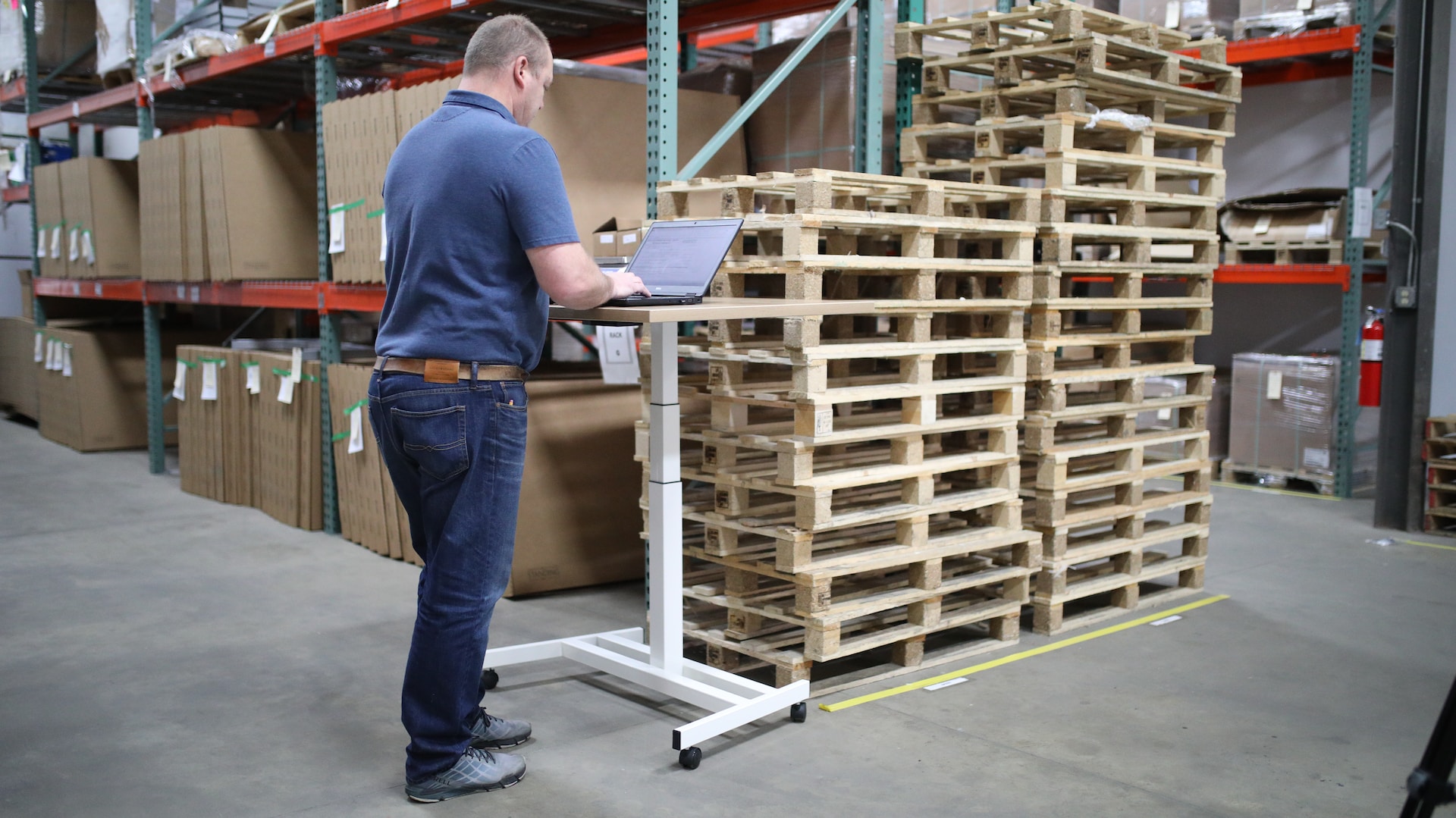7 Common Inventory Management Errors (And How to Avoid Them)
September 13, 2023 - 15 minutes readThese costly mistakes will cut into your bottom line—but luckily they’re easy to avoid.
Inventory management errors may be costing your business more than you think. You might measure this cost in wasted time, frustration, or lost customers. But ultimately, it all boils down to financial losses that are easily avoidable with the right strategies in place.
In this article, we’ll dig into the most common inventory management errors faced by both traditional retailers and e-commerce businesses. We’ll also discuss strategies for avoiding these missteps so you can make the most of your inventory investment.
Why Inventory Management Errors Matter—A Lot
Are you managing your inventory, or is your inventory managing you? Sometimes it can feel like the latter when you don’t have a solid inventory management system in place, and it’s easy to see why. One simple error can cause a domino effect of consequences for your business.
Poorly managed inventory causes frustrations for customers, ranging from out-of-stock items to longer shipping times due to lack of product availability. It can also lead to overstocks, stockouts, and inefficient use of warehouse space during a time when industrial real estate is at a premium.
In turn, these problems can have a ripple effect on your business. It may cause customers to shop elsewhere, meaning a loss in sales and eventually, a damaged brand reputation. That’s why it’s important to focus on avoiding common inventory management errors that hurt your bottom line.
On the flip side, the benefits of good inventory control and management include reduced costs and increased profits, improved stock availability, and faster fulfillment, all of which lead to happier customers.
The 7 Most Common Inventory Management Errors
These are the most common inventory management errors that businesses make—and odds are that if you’re making one of them, you’re probably making a few others as well. Many of these errors stem from the same root cause: a lack of solid systems for inventory management. That’s why many of these errors are interlinked with each other. The upside of this is that by tackling these core issues and following inventory management best practices, you’ll go a long way towards resolving most of these errors.
1. A Lack of Planning
There’s an old saying about planning: “If you fail to plan, you’re planning to fail.” That’s certainly the case with inventory management. If you don’t have a solid inventory management process in place, it can be difficult to anticipate customer demand or manage your stock levels correctly.
Without proper forecasting, you won’t know when certain products are running low or how much of each item to order. This can result in overstocking and stockouts, both of which mean lost sales and revenue.
How to Avoid It:
Make sure you have an up-to-date forecast that allows you to anticipate customer demand based on past and current product performance, then use this forecast to adjust your stock levels accordingly. Also, consider using tools like inventory optimization software or a supply chain visibility platform to help you better manage your inventory levels by measuring stock levels and product trends.
2. Foregoing Automation
Inventory management can be a daunting task, and manual processes are both time-consuming and prone to errors. Without automation, it’s nearly impossible to keep track of all your inventory with accuracy and efficiency.
Whether you have some haphazard automation in place or you’re still managing everything manually in Excel, you’re at risk of making costly mistakes by sleeping on the business-boosting benefits of automating your inventory management. These days, automation is a must for any business that wants to keep up with the competition.
How to Avoid It:
Look into tools like inventory management software, demand planning software, and warehouse automation solutions to help you automate your entire inventory management process. You’ll be able to easily track stock levels, keep on top of ordering, identify up-and-coming trends in customer demand, and more. Automation can also help you identify and address issues more quickly so you don’t suffer the consequences of an inventory blunder for too long.
3. Poor Organization
Your warehouse should be organized and optimized for maximum efficiency. If it’s not, your inventory management is likely suffering.
Unfortunately, a lack of organization is an issue that can easily snowball. It’s a little bit like a teenager with a messy bedroom—the more disorganized your warehouse is, the more disorganized it’s likely to be in the future if you don’t make any changes. And, the more likely you are to make costly mistakes with a warehouse in chaos.
Poor organization and poorly thought-out processes can cause inaccurate stock counts, lost items, incorrect location tracking, or even safety issues for warehouse employees. It can also lead to inefficiencies—for example, if your most popular item is stored high out of reach, it’s slowing down your order pickers. The longer you wait to get things in order, the more significant these errors will be.
How to Avoid It:
Implement an efficient warehouse organization system to make sure everything is in its proper place and easily found when needed. Investing in warehouse automation can also help improve organization and accuracy. With automated systems that track inventory, you’ll always know where things are located and how much of each item is in stock.
4. Unqualified Employees
Automation isn’t the answer to all of your inventory management problems. You’ll also need to make sure you have the right people on board; once they’re in place, it’s time to invest in training them.
Employees who aren’t properly trained in inventory management processes or systems can introduce costly errors into your inventory system. For example, they may not know how to use certain software correctly, resulting in incorrect data entry or inaccurate stock counts. Even with an intuitive inventory system, training is critical. Employees who feel confident on the job are also happier on the job, which means better performance.
How to Avoid It:
Proper training is key to ensuring your employees can effectively manage and track inventory. Be sure to provide them with training in any automated systems you’re using, as well as regular refresher courses. Many software providers offer online resources, like how-to videos, blogs, tutorials, and other content . Take advantage of these ready-made resources to help your people improve performance. Additionally, make sure relevant staff are familiar with the processes related to ordering, stocking, tracking, and shipping inventory accurately and efficiently.
Depending on the size of your business, you may also want to consider hiring a dedicated inventory manager. With a firm grip on all of your inventory processes, hiring someone in this role can be a game-changer as you work to scale up your business and optimize your inventory management.
5. Under- and Over-Stocking Items
This may circle back to a failure to forecast, but it’s worth mentioning on its own. Both under-stocking and over-stocking items can have a big impact on your business. If you’re not stocking enough of an item, you could miss out on sales due to stockouts. On the other hand, if you’re stocking too much of something, it could lead to extra storage costs and wasted space in your warehouse.
Don’t just focus on the number of items you have in stock—you also need to make sure your inventory mix is balanced and that you’re carrying items that customers actually want. Jeff Bezos, who may know a thing or two about inventory management, encourages businesses to “determine what your customers need, and work backward.”
How to Avoid It:
Forecasting is key to avoiding overstocking and under-stocking items. Make sure you’re looking at historical sales data, inventory levels, current trends, customer demand, seasonality, and any other factors to establish reorder points. Consider investing in an inventory optimization tool or a supply chain visibility platform to help you gain more insight into your inventory so you can make smarter stocking decisions.
6. Lack of Performance Measurements
If you don’t have any performance measurements or auditing in place, it can be difficult to identify issues with your inventory management systems. Without these metrics, there’s really no way to tell if your processes are working as they should, or if there are any bottlenecks that need to be addressed—at least not until something disastrous happens.
Data is critical to any successful inventory management strategy, and without it, you won’t be able to make informed decisions or optimize your processes. There’s no such thing as too much information here.
How to Avoid It:
Make sure you have the right KPIs in place so that you can assess the performance of your inventory management process. This could include everything from stock levels to on-time delivery percentages and more. Regular audits will help you ensure your processes are running smoothly and identify potential issues early on before they escalate into big problems for your business.
7. Poor Vendor Relationships
The relationships you have with your vendors can have a significant impact on the success of your inventory management process. After all, your vendors are the ones who ensure you have the right products at the right time for your customers.
If you don’t have a good relationship with suppliers, it can result in delays in shipments and other issues that disrupt your inventory levels. Poor vendor relationships can also lead to higher costs; a lack of communication can make matters even worse, as you might not have sufficient notice about these issues, leaving you without a Plan B.
How to Avoid It:
Make sure you’re selecting the right vendors and nurturing these relationships through effective supplier relationship management practices. Establish processes for regular communication and use tools like order tracking and electronic data interchange (EDI) to help keep everybody on the same page.
How Inventory Management Software Can Help
While there are many different strategies you can use to improve your inventory management process, one of the best is investing in inventory management software. This business-boosting software can help automate many tedious warehouse and inventory tasks, reduce human error, and provide critical real-time visibility into your stock levels.
Inventory management systems can also make it easier to manage multiple warehouses or locations at once, as well as track orders and supply chain processes. Ultimately, you’ll be able to manage your inventory more effectively and ensure products are delivered to your customers on time.
(Learn more about how inventory management software can optimize your business.)
The Bottom Line
Inventory management errors are costly. They lead to lost sales, dissatisfied customers, and wasted resources. Fortunately, there are several strategies you can use to minimize such errors and ensure your inventory processes run smoothly. These include investing in the right technology, providing proper training for employees, forecasting accurately, and nurturing collaborative relationships with vendors.
Being proactive and tackling these issues head-on will create a more efficient inventory management process and ensure your business runs like a well-oiled machine.
If you’re interested in taking your inventory management strategy to the next level, get in touch. We will be happy to start you on your journey.


